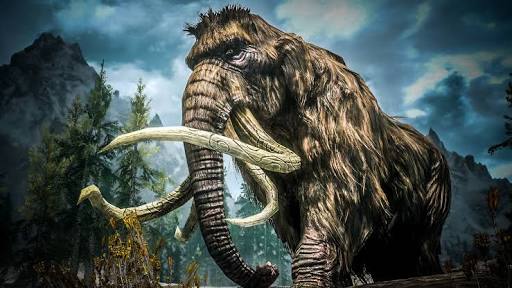.jpeg)
The first person to reach the North Pole was the United States explorer, Robert Peary, in 1900. Or perhaps, Frederick Cook, in 1908. Historians are still unsure, who among them first set foot on it. After all, it is a fitting story for discovery in the Arctic, the corner of the world where ambiguity dominates. There is not even an official consensus in which it is the Arctic. Technically, the Arctic refers to anything above the Arctic circle, which has a latitude of 66 degrees, 32 minutes north. Definition of the United States, the region includes all the Bering Sea (which extends south as far as 53 degrees). While some scientists describe the Arctic by using arctic tree lines or average temperatures to draw their boundaries. And many research stations in the region are built on sea ice sheets, floating and have no fixed locations. Therefore, it is difficult to determine when humans arrive at the North Pole.
However, in a newly published report in Science, the Russian research team records the history that humans once occupied the region since 45,000 years ago, several thousand years earlier than previous archaeologists research. But their discovery is not based on arguments about frozen mummies, or any man-made objects. Instead, the discovery is a mammoth body, found in 2012 on the Siberian coast of Yensei Bay. The researchers were able to determine the age of the bone. And the death of the hairy elephant occurred 45,000 years ago. The findings were supported by analysis of branches, peat, and other natural ingredients found around and above the body. Based on that, the giant, obviously in good health at death. The dental examination said he was still about 15 years old at the time of his death, while the large amount of fat in his hump (many soft tissues remain intact) showed that the ancient elephant was healthy. So what causes him to die and the herd extinct? The researchers say, from his death, it appears that it is caused by a pointed weapon that can only be made by humans.
A small sign, a symmetrical hole in the skull indicates that the giant has been punctured by a spear, as found by a fracture of the foot and shoulder of the bone. Further analysis revealed that the injury occurred before the animal's death. The pieces of bone-proboscis have also been disarmed, which experts have speculated may be a way to kill the animal by shredding the trunk with a sharp tool. The giant dies slowly. To make support of their findings, the researchers also mentioned the new discovery of a werewolves from a separate location in the Siberian Arctic. A wolf bone analysis that lived at the same time period as mammoth. The X-ray finds a mark on one of the wolf's leg bones is "the result of a penetrating injury caused by a sharp weapon." The bone also shows signs of healing, indicating that the wolf survived the injury and eliminated the possibility of the wound after animal death. "Both incidents show that even during the phase of the time period between 3,000 and 57,000 years ago, humans have inhabited the vast arctic, although the population may be small and rarely persist for long periods of time," write the researchers as quoted by The Atlantic, Saturday January 15, 2016. This is the second time in a decade of Siberian discovery that has made archaeologists think of what is in the region. In 2004, a team headed by Vladmir Pitulko, found a 31,000 year old hunting tool along the Yana river in central Siberia, pushing back evidence of human existence there have been around 15,000 years. "The extent of the Arctic makes it think that in the region it is impossible for a human to live, but from the deaths of polar animals it says another: Humans once lived in the region, and possibly they were one of the causes of Mammoth extinction. close the researcher.
source: Liputan6.com